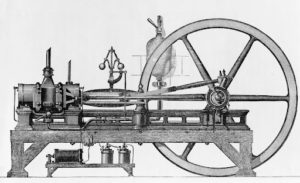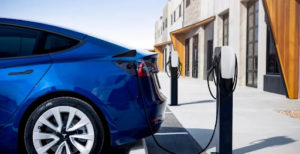Did you know that the world’s first self-propelled cart appeared back in 1355 and that the top speed of the world’s first “automobile” was 6-9 km/h? Unbelievable, yeah? But the fact is that the history of automobiles is rooted in ancient times, and even then brilliant human thought aimed to create something similar to modern cars.

The history of the automobile is a long and varied one, with many important developments and milestones. From the first Benz Motor Car to the Ford Model T or a contemporary Tesla: the history of the automobile is quite rich, however, here, we have gathered the most important events that played a vital role in shaping the industry as we know it today.
Some of the most critical include:
The invention of the internal combustion engine

The internal combustion engine was invented by several individuals throughout the 19th century, with the most notable being George Brayton, Nikolaus Otto, and Rudolf Diesel. George Brayton developed the first practical two-stroke engine in 1872, while Nikolaus Otto was credited with inventing the four-stroke engine in 1876. Rudolf Diesel further developed the internal combustion engine with his invention of the diesel engine in 1892, which was known for its high thermal efficiency and ability to run on a wide range of fuels.
The assembly line

In 1913, Henry Ford first introduced the assembly line which made the mass production of automobiles possible, increasing efficiency, and speed and reducing the cost of production. As a result, Ford started selling vehicles at a much lower price point than its competitors. Later, this approach received the name “Fordism”, which had a great influence on the way goods are manufactured even today.
The introduction of the Model T

The Ford Model T played a significant role in the development of the automotive industry. Its introduction in 1908 marked the beginning of the mass production of automobiles, which greatly reduced the cost of vehicles and made them more affordable for the average consumer. The use of assembly line techniques, which were developed by Henry Ford and his team, allowed the Model T to be produced at a much faster rate than traditional hand-built automobiles. This made it possible for Ford to sell the Model T at a price that many Americans could afford, which helped to spur the growth of the middle class and increase demand for automobiles. Additionally, the Model T’s popularity helped to pave the way for the development of new technologies, such as the use of interchangeable parts and the expansion of the highway system. Overall, the Ford Model T played a revolutionary role in the automotive industry by making automobiles more accessible to the middle-class person and by setting new standards for mass production, reliability, and affordability.
The rise of the automobile culture in the 1920s

The 1920s were marked by the significant rise of automobile culture in the United States. Consequently, it led to a great demand for affordable yet reliable vehicles. The introduction of the Model T and the assembly line led to a tremendous step forward and the expansion of the highway system, thus the middle class. This expanded the automobile industry, which eventually became one of the largest industries in the USA. As more and more people began to own their automobiles, the infrastructure to support them had to be developed as well. Governments invested heavily in the construction of roads, highways, and bridges to accommodate the growing number of vehicles. This helped to spur economic growth, as it made it easier for people and goods to move around, and it also led to the growth of suburbanization and the expansion of cities. Additionally, the rise of the automobile culture led to the development of new businesses, such as gas stations, vehicle dealerships, and repair shops. These businesses helped to create jobs and generate economic activity in communities across the country.
The rise of the modern car industry

The introduction of modern automobiles in the 1950s and 1960s marked a significant shift in the development of the automotive industry. During this period, there was a strong focus on developing new technologies that would improve the performance and safety of vehicles. One of the key areas of development was aerodynamics, as automobile manufacturers began to focus on streamlining the design of cars to reduce drag and improve fuel efficiency. This led to the development of more aerodynamic machines such as the Chevrolet Corvette and the Ford Thunderbird. Another important area of development was the use of lightweight materials, such as aluminum and fiberglass, which helped to reduce automobiles’ weight and improve their performance. This was especially important for sports and high-performance vehicles. Additionally, there was a strong focus on safety features, as manufacturers began to incorporate features such as seat belts, padded dashboards, and crumple zones into their vehicles. These innovations helped improve safety and reduce the risk of injury in an accident.
The rise of electric vehicles

The revival of electric vehicles in recent years can be considered an important milestone in the development of the automotive industry. Even though the technology emerged in the 19th century, it faced several challenges such as limited range, lack of charging infrastructure, and high production costs. The situation changed dramatically over recent years with the introduction of the improved charging infrastructure. Electric cars have several advantages over traditional gasoline-powered counterparts. They are more energy-efficient and produce fewer emissions, which can help to reduce air pollution and reduce dependence on fossil fuels. The development of electric cars has been driven by advances in battery technology, which have made it possible to build electric cars with a greater range and at a lower cost. Additionally, governments and private companies around the world are investing in the development and deployment of electric vehicles, as well as charging infrastructure, to encourage the adoption of electric cars.
If you like this article, please share it with your friends.

